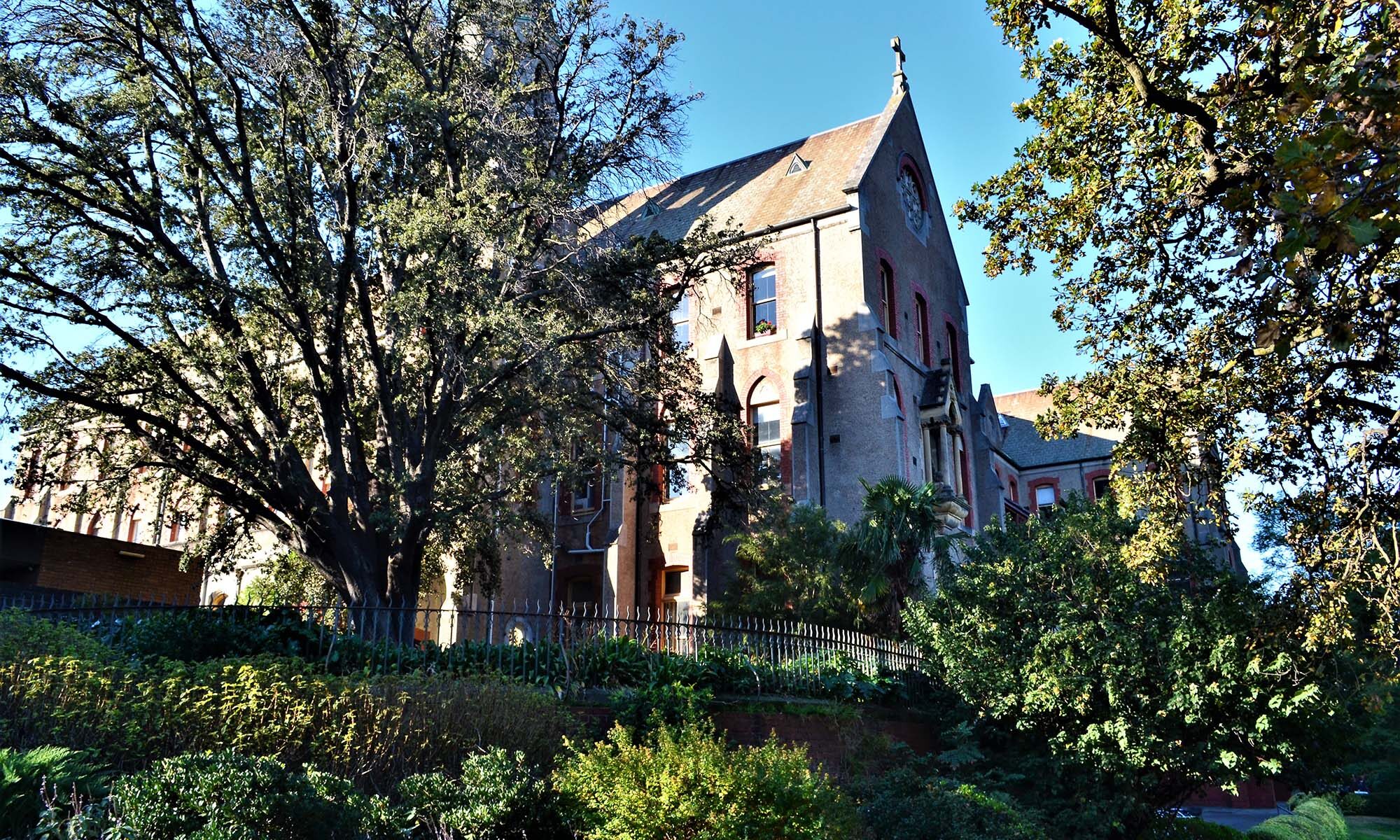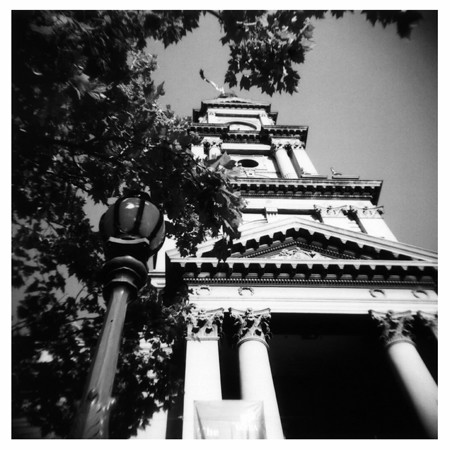
This from the State Library’s archives. And the St. Kilda Historical Society has fascinating information about George Johnson, including that his great-grandson is practising as an architect in St. Kilda, representing a unique architectural and building dynasty of 6 generations:
“Over some two hundred years, the Johnson family have for six generations been involved in the building industry: as carpenter, builders, engineer, but no less than four as architects. Probably George Raymond Johnson (1840-1898) architect is the best known. I’m not aware of another such dynasty in Melbourne …
George was the son of William, journeyman (employee) carpenter and builder from Marston-on-Dove, Derbyshire. He was articled to George Hall, architect to the Midland Railway Co. He practised briefly in London before immigrating to Queensland in 1862. He worked as surveyor and builder as Godfrey & Johnson (1863-64), then came to Melbourne in 1867. He was soon a successful architect here, designer of three groups of almshouses, including: the Jewish, at 619 St Kilda Road, St Kilda (1869) and the Old Colonist Homes for George Coppin, the famous theatrical entrepreneur, at North Fitzroy (1870) and then fifteen theatres, including the Prince of Wales Opera House (1872), the Theatre Royal, Adelaide (1877), the Bijou, Bourke Street (1889), all now demolished and the Theatre Royal, Perth (1897) as well as many shops and hotels.
But George Johnson’s greatest works are splendid town halls: Hotham (North Melbourne, 1875), Daylesford (1882), Maryborough (1887), Fitzroy (1887), Collingwood (1885-90), Northcote (1888-90) and Kilmore (1893-95), as well as the Metropolitan Meat Market (1879-80 & 89), the 1888 extensions to the Royal Exhibition Building and the Hospital for Incurables (the Austin, 1881). … George Johnson’s practice collapsed in the 1892, losing all his assets in the subsequent financial crash. He left Melbourne for Perth with his architect second son, Harry M.G. Johnson (1867-1931).”



